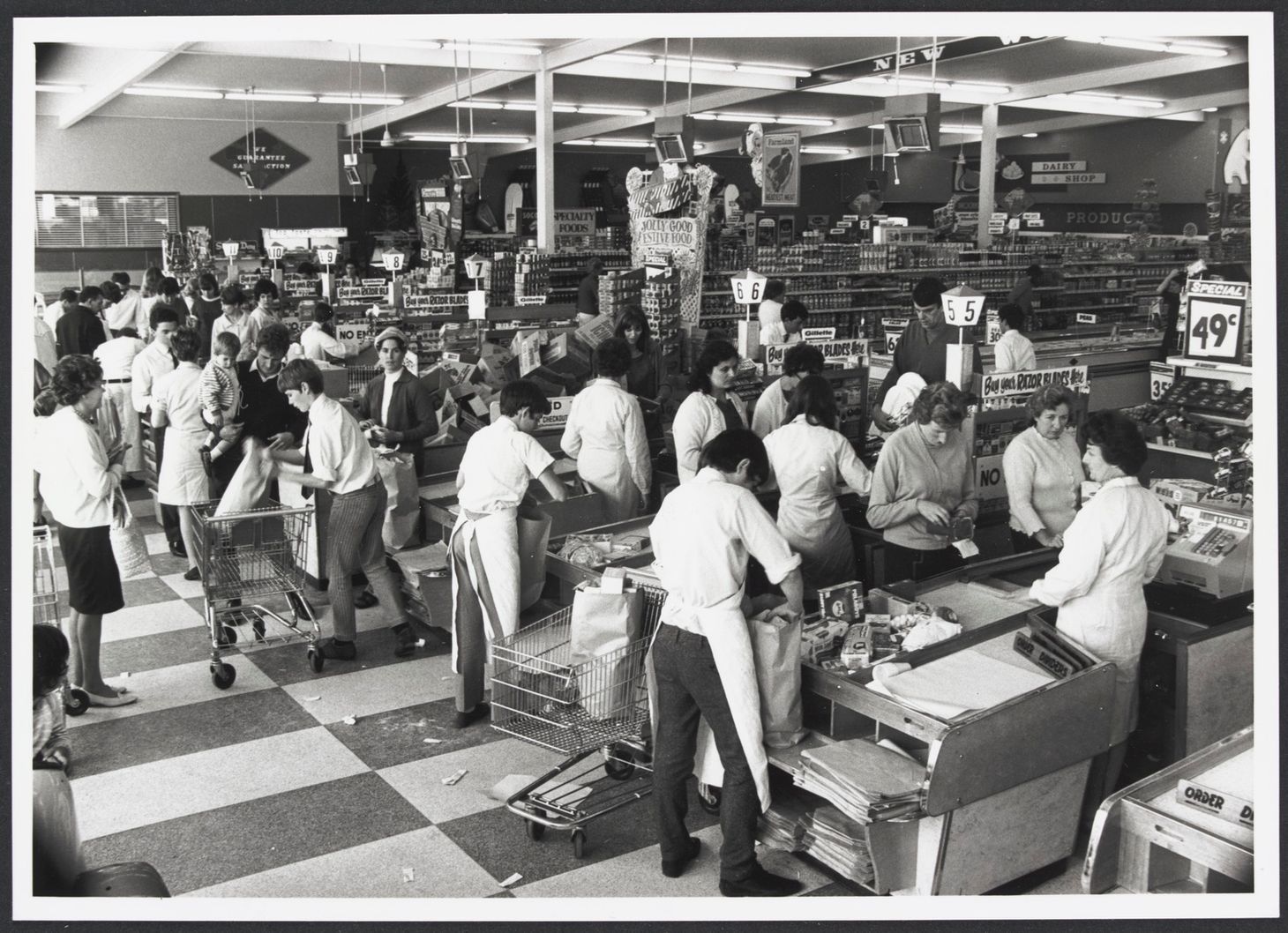Figuring out who you are using stuff won't work
Consumerism is fun, sure, but it won’t help you define yourself. (And your self isn’t even real.)

Table of Contents
I’m a guy in his 30s going through a band t-shirt phase. You can likely make some decent guesses about me as a person based on that.
I’m buying a bounty of band shirts for three reasons. But I don’t like thinking about – or admitting – the third one.
- I’m going to a lot of gigs this year – especially for local bands I want to support.
- I like having mementos of those gigs.
- I kinda want to be known as a “he knows about cool bands” guy.
Reason 3 doesn’t come up often. It’s not a major driver of my buys and literally no-one cares about the shirts I wear. But it’s still there. And I find it a bit embarrassing.[1]
Why we love stuff
The world is chaotic. Objects help buoy ourselves in among the hodgepodge.
Countless objects just do a job. But others become a way to define ourselves. We choose one thing in particular and it becomes a marker of self. Its stability through time gives us something to hold onto.
Hannah Arendt – a German philosopher best known for her book The origins of totalitarianism, which everyone bought, opened, read one page and said “okay fuck this” when Donald Trump became US president – wrote an essay called Labor, work, action.
In it, she discusses the difference between different types of human activity. She argues that objects become a key part of how people define themselves:
The things of the world have the function of stabilizing human life, and their objectivity lies in the fact that men, their ever-changing nature notwithstanding, can retrieve their identity by being related to the enduring sameness of objects.
“The things of the world” remain the same from day to day and, as such, help anchor us in the face of the ever-changing natural world. They become something we can define ourselves against.
No matter the day, no matter the situation, my band t-shirts are still there. I can always become the “guy in the Cable Ties shirt”, or the guy who splurged on hand-made garden tools, or the guy with HomePod Mini speakers in every room in the house.
Ultimately, though, the identity cobbled together using those things is just as dynamic as nature itself.
I'm constantly changing in ways big and banal. Will I even like the bands whose shirts I'm fossicking away in a month? A year? Will I even care about going to gigs?
It was just a year or so ago that I decide all my shirts will now be plain, solid colours. What happened to that guy? (And why do I spend so much time thinking about shirts?)
Any sense of a stable self is an illusion. And trying to hold onto that stability is doomed to fail.
But the self isn’t real
That’s because there’s no real “self” to be stable. Buddhist philosophy helps round out Arendt's view of objects and explain why they're alluring.
Let's look at how Alan Watts, one of the philosophers who helped popularise Buddhism in the west, described the self in his book The way of zen:
For the conventional “self” or “person” is composed mainly of a history consisting of selected memories, and beginning from the moment of parturition. According to convention, I am not simply what I am doing now. I am also what I have done, and my conventionally edited version of my past is made to seem almost more the “real” me than what I am at this moment. For what I am seems so fleeting and intangible, but what I was is fixed and final. It is the firm basis for predictions of what I will be in the future, and so it comes about that I am more closely identified with what no longer exists than with what actually is!
He goes on to explain that it’s “fundamental to every school of Buddhism that there is no ego, no enduring entity which is the constant subject of our changing experiences.” Ego, he says, is just an “abstraction from memory.”
“The point,” according to Watts, “is that there is no Self, or basic reality, which may be grasped, either by direct experience or by concepts. The Buddha’s view was that a Self so grasped was no longer the true Self. Any attempt to conceive the Self, believe in the Self, or seek the Self immediately thrusts it away.”
We’re not one thing from beginning to end. We are the moment we're in.
We’re a confluence of events
The Sri Lankan monk Walpola Rahula digs into this idea in his seminal book about Theravada Buddhism called What the Buddha taught:
What we call a “being”, or an “individual”, or “I”, according to Buddhist philosophy, is only a combination of ever-changing physical and mental energies, which may be divided into five groups or aggregates.
The five aggregates are:
- The aggregate of matter, which includes our five sense-organs (eyes, ears, nose, tongue and body) and the “corresponding objects in the world”.
- The aggregate of sensations, which covers all our sensations experienced as our physical and mental abilities interact with the world.
- The aggregate of perceptions, which recognise physical and mental objects.
- The aggregate of mental formations, including all our volitional activities. This covers everything we decide to do – our will, attention, determination, and more.
- The aggregate of consciousness, defined by Rahula as “a reaction or response which has one of the six faculties (eye, ear, nose, tongue, body and mind) as its basis, and one of the six corresponding external phenomena (visible form, sound, odour, taste, tangible things and mind-objects, i.e., an idea or thought) as its object. Consciousness is connected with our other faculties – not something that stands alone.
What we think of as a self or “I” is, according to Rahula, “a convenient name or label given to the combination of these five groups. They are all impermanent, all constantly changing.” But, when they’re all working together, the five aggregates feel like a persistent self.
My attempt to slap a band shirt on the tossed salad of selfhood is, ultimately, doomed to struggle. It’s an attempt to hold onto one part of my past – that I went to a gig and bought a shirt – and make it an ongoing now so that other people see it and think “damn, that guy’s something”.
We’re not objects
Look, I struggle these ideas. Right now, I think they're an accurate description of reality but, still, there's a niggling voice in my head that says "but I'm me, right?"
Part of it is that the language of self is useful in our day-to-day. No-one wants to go around referencing aggregates when they’re trying to explain who they are.
But, like we've spoken about before, language is tricky. If you're not careful, you can start to think that the words we use are reality.
In the case of selfhood, that can lead you to define yourself by the things you own or consume. They're the things that promise to ground you in the face of a world that won't stop changing until it, and everything else, is gone.
I'm changing as the moment changes. If I stay present and stay open to that, well, who knows what I'll become. That can be terrifying, though, since all that change only has one final end point.
The band shirts aren’t the problem. At least that’s what I tell myself: I’ll probably buy another one at the next gig I go to.
There’s a scene in The menu, a film about an exclusive restaurant with a murderous head chef, where an obnoxious foodie gets called up into the kitchen to cook a gourmet meal and just totally falls apart. As someone who kinda wants to be acknowledged for his musical taste but can’t play a lick of music, I think about that scene a lot. ↩︎
Unzen Newsletter
Join the newsletter to receive the latest updates in your inbox.
